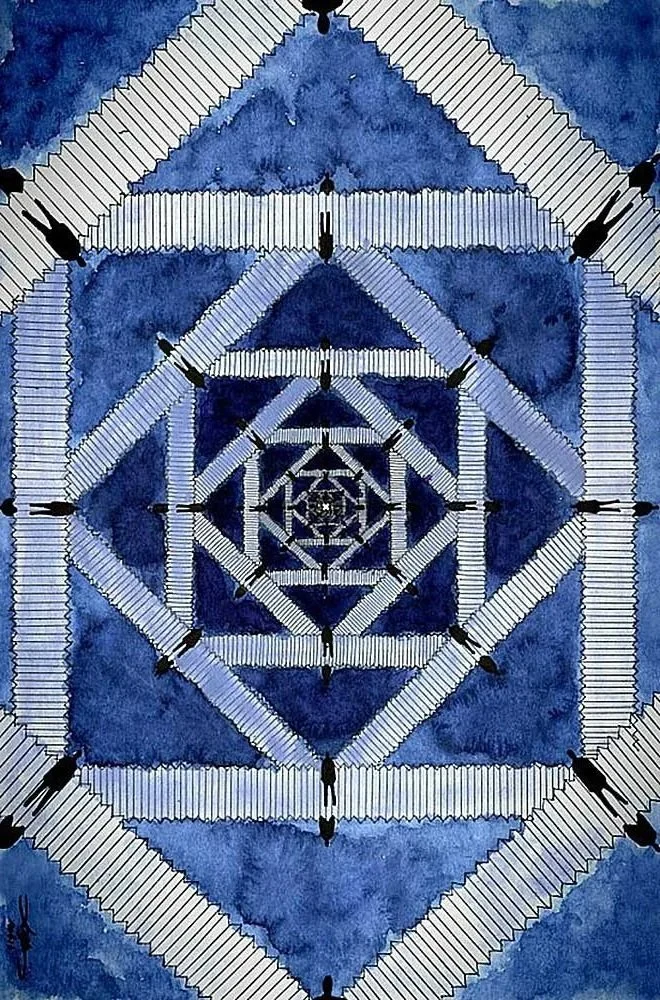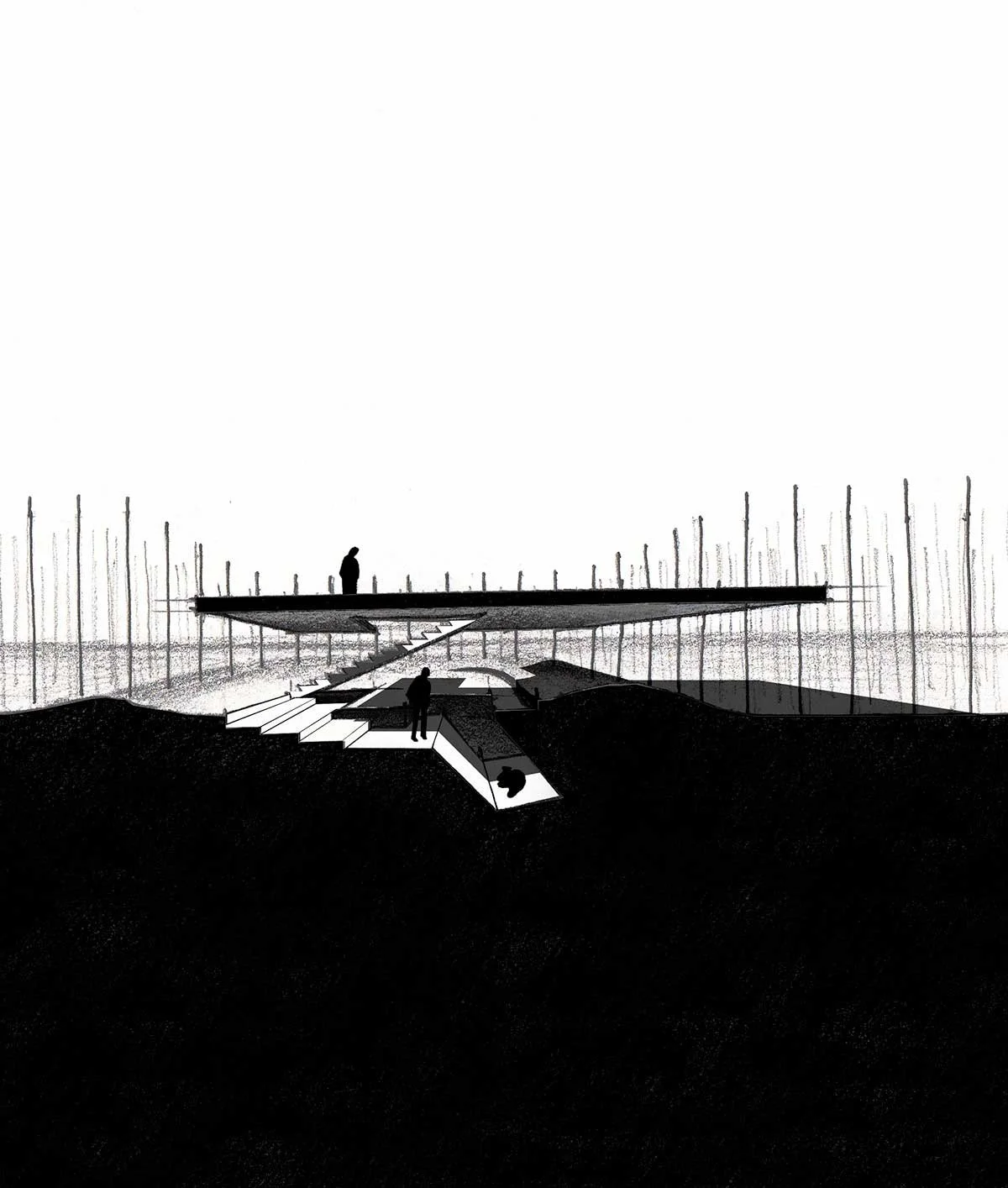SSK focuses on experiential architecture that integrates the form and meaning inherent in space by utilizing data and systems. SSK implements adaptive architecture, an active methodology that transcends the physical limitations of space and ensures a healthy living environment through the optimal balance of form and function. It aims to revitalize fragmented daily life through refined spatialization of intangible elements that affect spatial psychology, such as light, shadow, sound, and fluid dynamics. As a high-end studio that performs comprehensive design from furniture and lighting, which are the basic units of architecture, to detailed design and supervision, SSK does not accept low-cost projects or meaningless prolific works. As a design-oriented studio that pursues the pinnacle of architectural detail through dense study, SSK continues to work on innovative spaces.
SSK 는 공간에 담긴 조형과 의미를 데이터와 시스템에 기반하여 통합하는 실증적인 건축을 추구합니다. 형상과 기능의 최적화된 균형을 통해 공간이 지닌 물리적 한계를 극복하고 건강한 정주환경을 보장하는 능동적인 건축방법론인 Adaptive Architecture (환경적응건축)을 지향합니다. 이는 공간심리에 영향을 미치는 빛, 음영, 소리, 유체 등 무형요소의 정제된 공간화를 통해 파편화된 일상을 재생하는데 목적이 있습니다. 건축의 기본단위인 가구와 라이팅부터 실시설계 및 공사감리까지 종합디자인을 수행하는 High-end Studio 로 저가수주 및 무의미한 다작은 하지 않습니다. 밀도있는 스터디를 통해 건축 디테일의 정점을 추구하는 Design-oriented Studio 로 혁신적인 공간작업을 이어가고 있습니다.
What is good architecture? What are the standards for good architecture? Can good architecture last forever? There are no answers. But one thing is for certain: the idea that only those working in the field of architecture can deal with spaces is a foolish one. The placement of items in a store window, the repeated filling and emptying of cars on a road, the houses along an alley that light up one by one as the day winds down, and the carts of vendors along the sidewalks. These are all masters of spatial utilization. Their architecture is modest and honest and straightforward. They demonstrate that architecture should not limit itself to containing and fostering the lives of mankind, but go further, to act as a channel connecting the myriad stories of life. A dirty piece of cheese discarded in an alley becomes a valuable resource for ants. The pungent aroma beckons to the ants, and the cheese eventually becomes a crowded avenue, a square, a marketplace. Good architecture must be like a well-aged cheese. Good architecture must impose itself upon polluted locations and breathe new life into the spaces. My small rented room of just 33㎡ can become good architecture because it features no discomfort. Laundry dries readily there, and it is neither cold nor hot. Hot water flows from the taps. Opening the windows allows a good breeze to enter for ventilation, and sunlight reaches all the corners of the room. The bookshelf by the door blocks the noise of shoes clacking outside in the hallway. Good architecture must be distinguished from architecture which is good to look upon. It comes not from the latest designs in vogue among the architecture community but from the lives of real people. Architecture stemming from an architect’s vanity or a popular trend is not for everyone but for a select few. It is not a piece of cheese for all to enjoy, but only the fulfillment of individual greed. Good architecture comes not from images in a monitor that architects praise with the term ‘creation,’ but from the smell of food, the sound of songs, and the noise of televisions, all of which combine to create the stories we live. A good architect must know how to age the piece of cheese that architecture should be, a medium for life, improving its efficiency and searching for newer stories still.
AU MAGASIN DE NOUVEAUTES (육면각체의 재해석) / Korea Painting / WxL : 387x270mm / Sooseok L. Kim (2008)
SIMULACRE / Korea Painting / WxL : 210x230mm / Sooseok L. Kim (2011)
Architecture as universal in its appropriateness as a piece of cheese, that anyone would recognize and acknowledge, is an ideal that any architect would aspire to. But the difficulty that constantly arises in the pursuit of ideal architecture is the process of consideration in selecting the best possible solution of among a plethora of proposed ideas or alternatives. During this process, ideas once clear in one’s mind reveal themselves to be juvenile thoughts or assumptions when put into words. For example, when I explain or discuss the difficulties of work with others, I often find myself complaining that an unfinished work often seems more appropriate than a finished one. In doing so, I question whether I am only going through the motions of art. This doubt becomes magnified under the misconception that great artists create only works backed by irrefutable logic. Traces of countless retouches and corrections discovered through X-rays of famous paintings, Renaissance masters who through their artistic talent exaggerated the expressive details made possible by the Camera Obscura. These repetitions of trial and error were natural steps and attempts made in the creative process, yet a desire for a perfect process of creation leads me denigrate myself as but another ordinary student of art. Ideas beyond reproach in my mind become childish complaints when voiced aloud. There are times when apexes are reached with no such trial and error. This omission leads to pride and arrogance when viewed against the more tedious trials of others. But any work which did not involve some errors in the process of completion resulted in some sort of failure, a natural consequence of the lack of preparation. When art is seen as an action of creation based upon a motif reflecting one’s personal tastes, all creations are the result of filtering through one’s self, regardless of whether ‘doer’ regards them as art. Therefore, to create art becomes a part of self-expression. Thus, art becomes one’s self, and the artist is given the responsibility of creating something which is capable of touching and moving others. This is also the pride to which artists may lay claim. So long as one’s thoughts and works are evaluated by others, giving reason to the artists and his art, no one will desire to be ridiculed by an audience because of shoddy results. As such, the difficulties that arise from the process of architecture, at the height of ‘appropriate’ art, are like growing pains for the architect. I, too, have felt the despair that comes from a great idea being reduced to drivel when expressed outwardly, but this is only a natural and ordinary process. Creating works that are appropriate, through trial and error, is both the burden and fundamental ambition of the artist.
The earlier architectural paradigm of defining a space through a floor, walls, ceiling and pillars is undergoing a transformation. And at the center of that transformation is the general user. Having experienced the realization of daring designs into actual spaces through the use of computer tools in recent years, users are consistently demanding new spatial experiences from architects. If revolutions in architectural design were traditionally driven by a desire for new materials, progressing from wood to stone to concrete to steel to glass, the evolution of design is now catalyzed by the public’s desire for new spaces. This is due, in large part, to the inherent handicap of architecture, that it requires long-term investments of time. But the developments of materials and architectural technique are placing upon architecture a role of leadership in social change. Therefore, the creation of new spatial concepts has become a more pressing and important task than the invention of revolutionary materials. The concept of a ‘BOX’ is no longer ‘a six-sided figure with edges and corners,’ but a more abstract ‘entity which contains a space.’ In other words, the freedom of paradigm made possible by realistic freedom and changes in spatial conception, in turn made possible by the development of materials, now demands of architects both revolution and responsibility, to a greater degree than in any previous time. Finally, the architect is liberated from the duty to build match boxes according to the dictates of standardization, given the right to think and express freely.
Floating Illusion / Pen / WxL : 300x400mm / Sooseok L. Kim (2013)
Tomb / Pen / WxL : 400x300mm / Sooseok L. Kim (2013)
Beyond the building process of visually fantastic mass, there is a consideration of the potential in the role of the architect. In other words, Bruce Branit’s video is a warning to modern architects who have missed their social role, focusing only on the visual expression of architecture. The most important thing, yet the first to be discarded in service of efficiency and business, is the architect’s willingness to explore new possibilities and act as a channel for human life. What has become of the architect’s mind, led only by the dictates of service? In this context, the works of masters such as Louis I Kahn, Peter Zumthor and Tadao Ando, who experimentally pioneered the role of the architect through traditional methods of light and space, become extremely important. Spaces which have the power to move people are not created through efficient programs and revolutionary designs alone, but rather from the stories which are connected through that space. Considerations of how such stories will be created and told will prove to be the path to ‘appropriate’ architecture.
Architecture in the future will further pursue freedom, in terms of both form and function, building upon this current climate. Yet the role of architecture as a channel or medium is a value which must not be overlooked even in this new paradigm. Great architecture does not come only from its historical value and form. True greatness comes, as mentioned earlier, from architecture’s function of communication. Architecture is at once the most expensive artifact that mankind can own, and the most powerful channel of communication. Regardless of its use, architecture has always been a setting for discourse and conflict throughout history. All this was the result of communication. Therefore, good architecture must fulfill its role as an intermediary. Like Leonardo Da Vinci’s SFUMATO techniques, in which pixels of various colors along the border of an object create a visual vagueness of division, architecture must also act as a catalyst to raze borders, combining various stories within a given region. The ‘Middle Architecture’ which is rapidly spreading through major Asian cities is a good example. The ‘Middle Architecture’ is a high-density form which combines residential, commercial and business-related spaces in buildings of 4-5 stories, allowing people of diverse professions to mingle, and creating a new urban culture. In other words, it is a new architecture paradigm in which users coexist by dividing dense spaces in high-rent urban areas. It is a curious residential form which naturally arose as a survival method. Many architects are presenting their ideas and creating Middle Architecture in cities like guerillas. Because this form cannot be realized without discourse and rapport between neighbors, neighborhoods where Middle Architecture appears naturally undergo an improvement of living conditions, including safety and sanitation. This makes it an ideal solution for future city developments in Asia, which is going through a more rapid growth as well as a high population density compared to European of North American counterparts. In this way, architecture in the future will not be limited to the pursuit of revolutionary new designs. Transcending design, creating new spatial cultures and introducing them to the public will also be an integral part of architecture’s future. Architects will have to study how design can effectively become intermediaries, and how it may be accepted by its users. The ‘appropriate’ spaces that architects aspire to create will be the ones that present new cultures of residence, diffusing naturally through their users, like the colors that ‘dissipate and combine like a fog (Sfumare).’ This is no easy task. The new generation of architects to which I belong shares the responsibility of transcending design and building living spaces which may contain the stories of their users. This is in keeping with traditional architectural values that emphasize the need for architecture to be constantly alive. This will be the driving force to motivate architects. Architects, in the end, only become architects yet again.
Mediator / Render / Sooseok L. Kim (2013)







